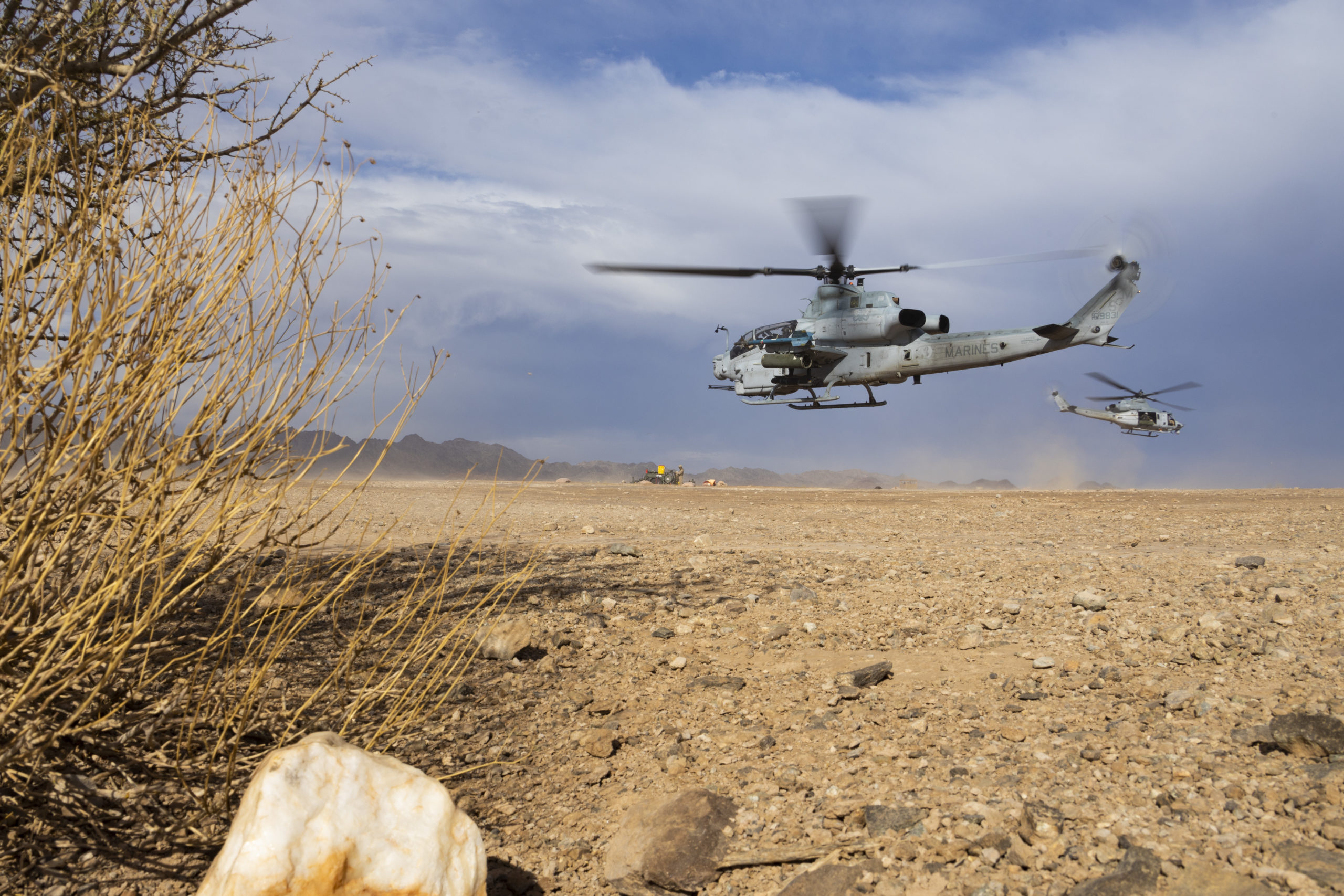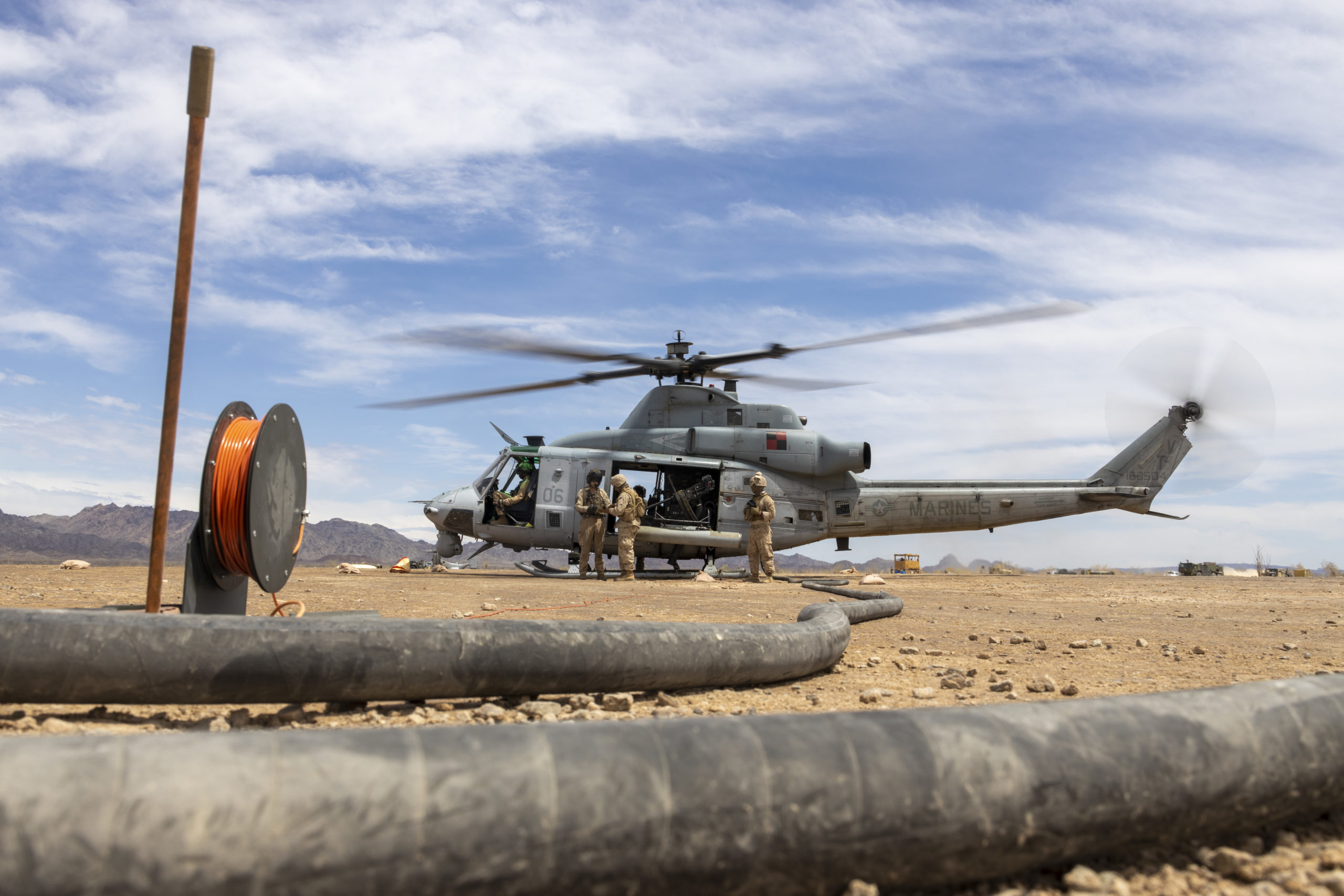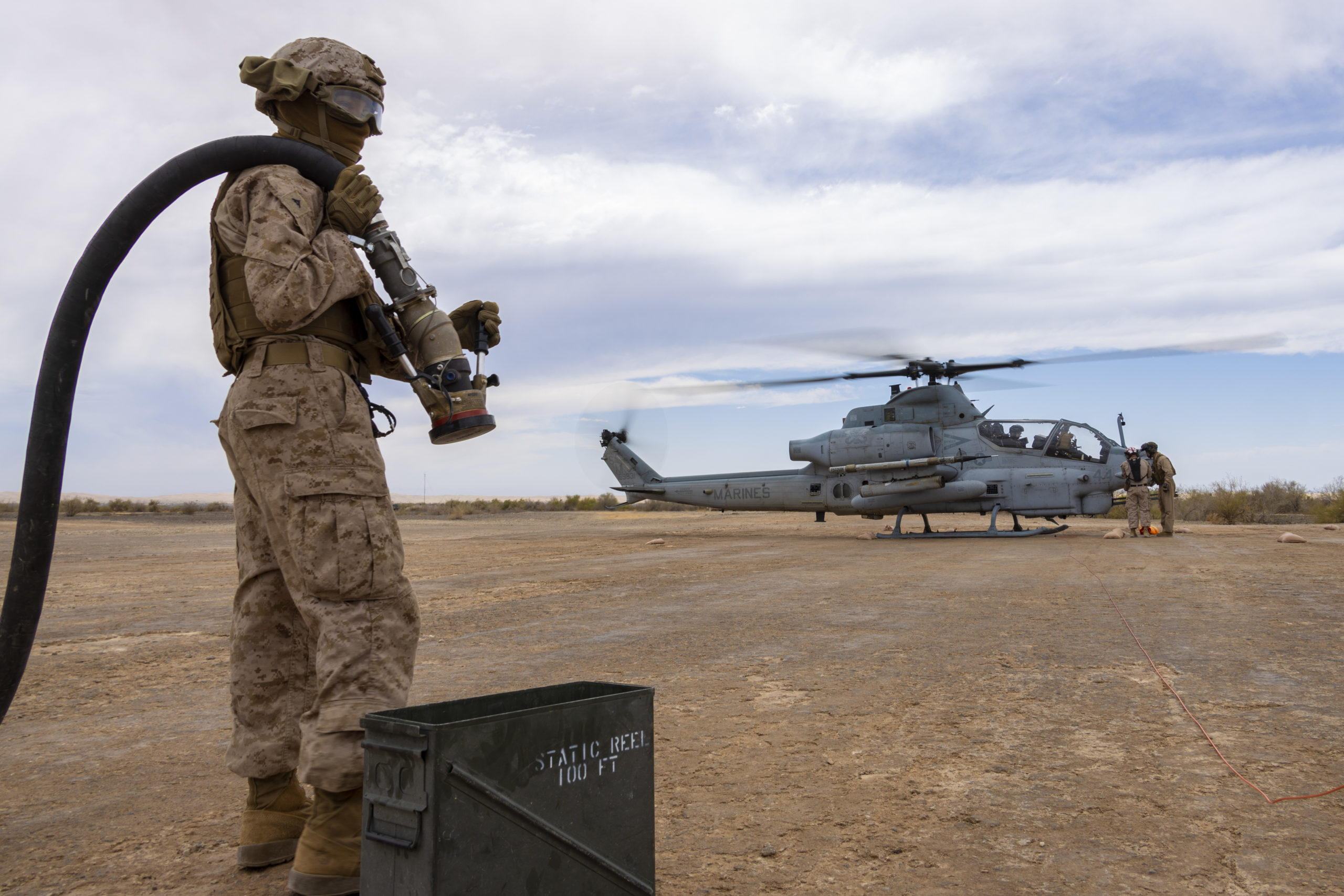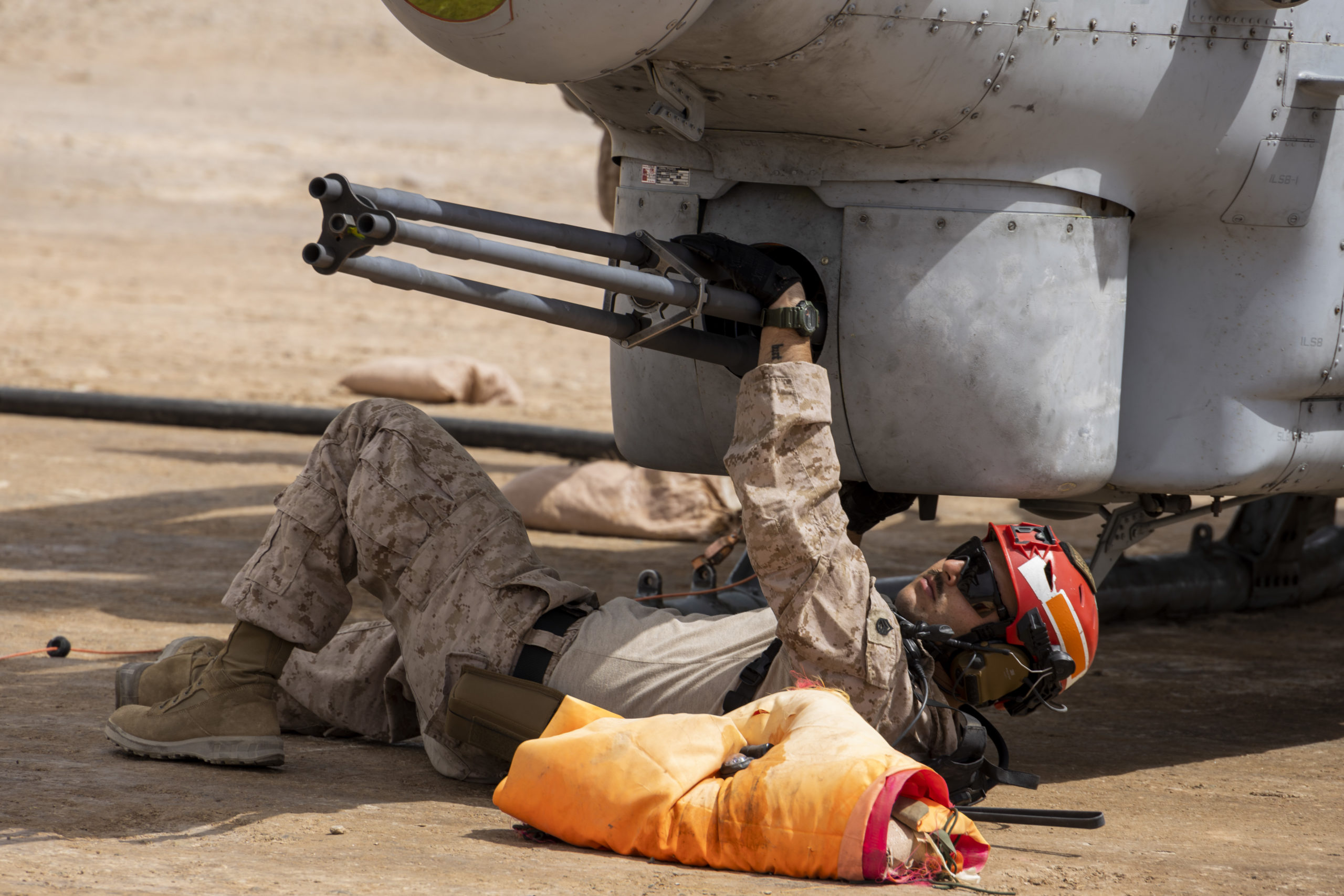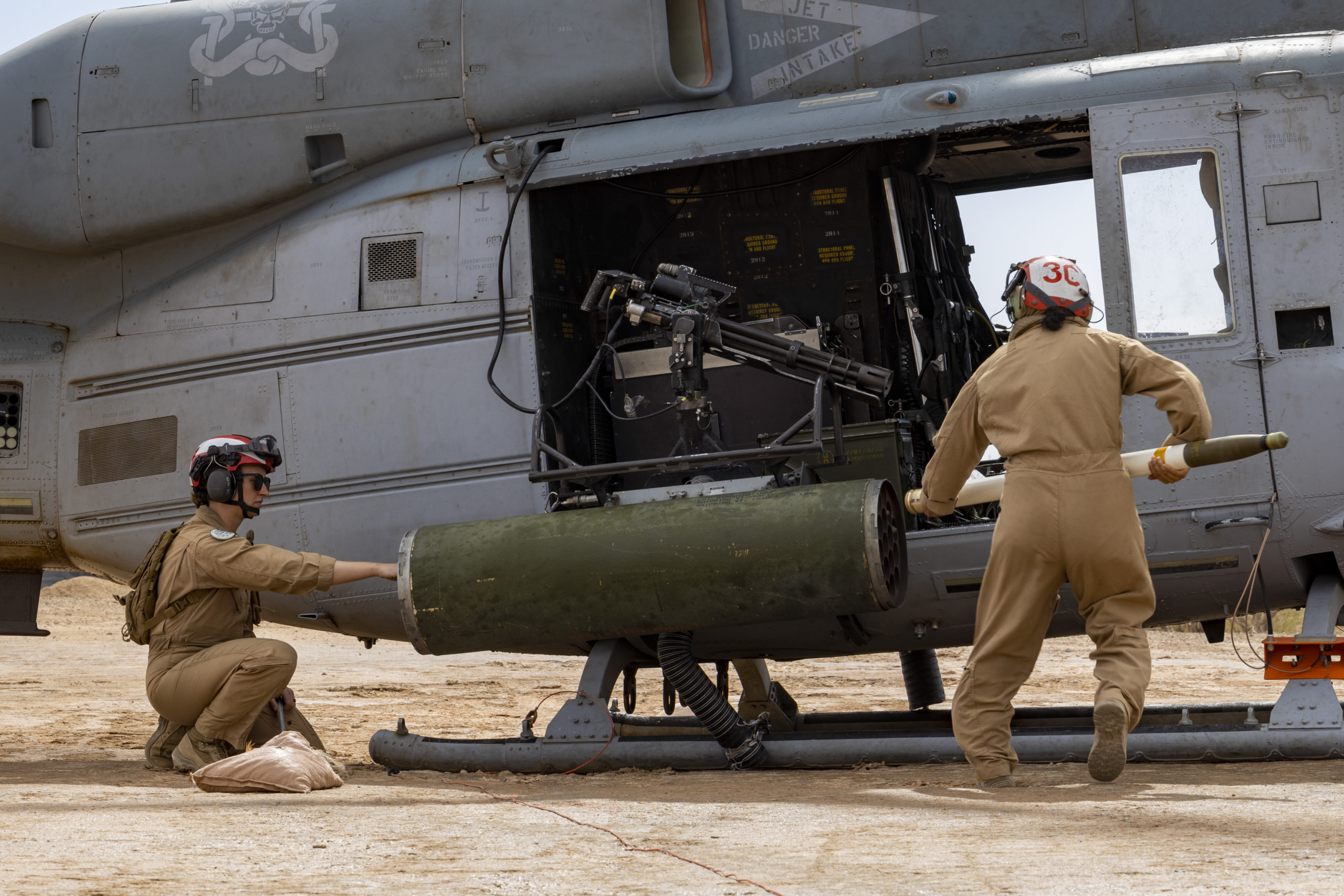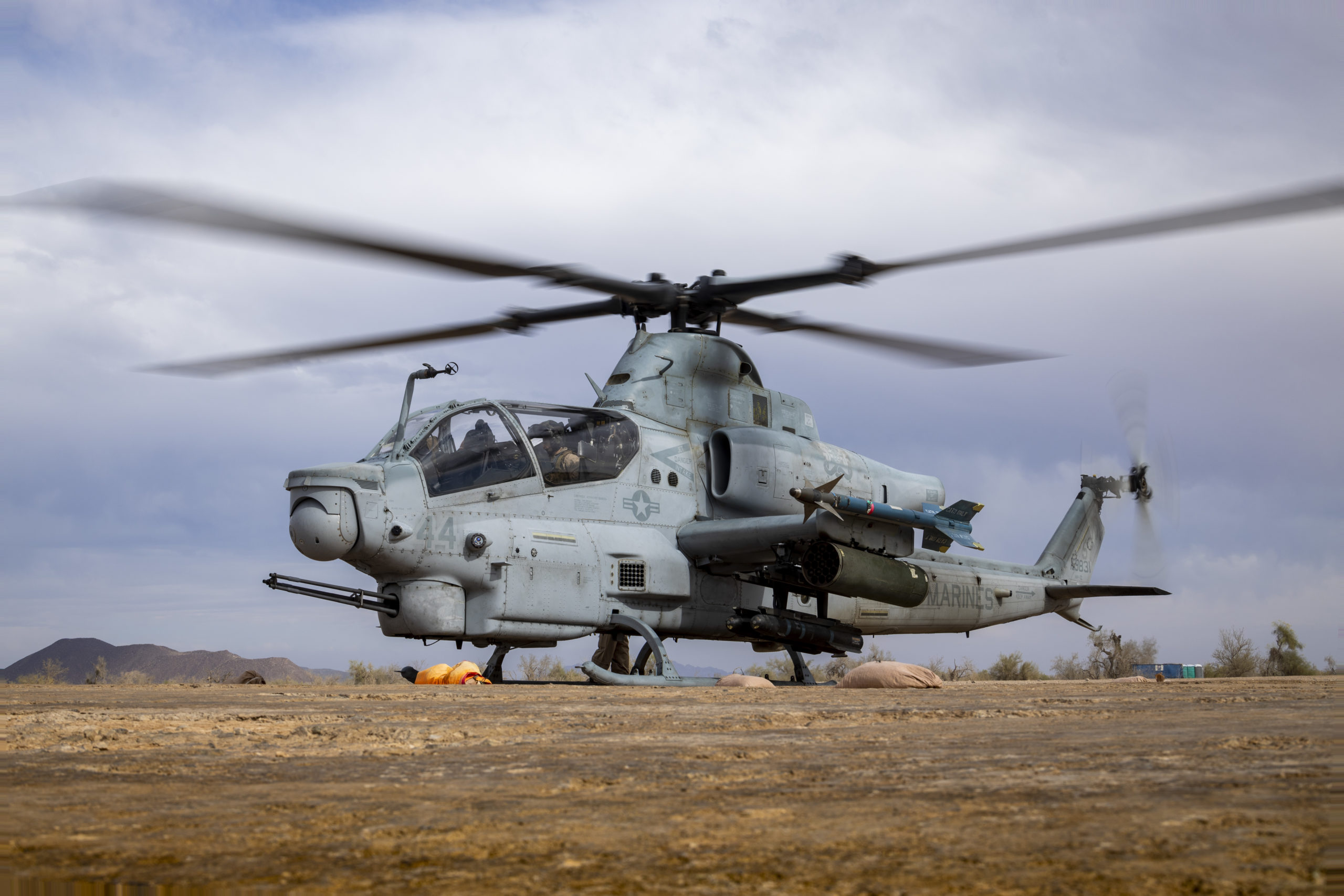U.S. Marine Corps UH-1Y Venom and AH-1Z Viper pilots assigned to Marine Aviation Weapons and Tactics Squadron One (MAWTS-1), are seen in the photo slide show below at the Weapons and Tactics Instructor course 2-25 at Mesquite, California, April 14, 2025.
WTI is a seven-week training event hosted by MAWTS-1 which emphasizes operational integration of the six functions of Marine aviation in support of the Marine Air Ground Task Force, Joint and Coalition Forces.
The H-1s are being modernized to enhance their contribution to the force. Recently, I published an article which discussed this upgrade path with William Hendricks who now works at Bell but has extensive experience in the USMC as a Cobra pilot, and extensive experience in deployments in the Middle East and in the Pacific.
Hendricks highlighted on-going efforts that will improve H-1 digital interoperability, add advanced survivability equipment, and expand the scope of weapons available to the Viper and Venom. He underscored that with the addition of both Link 16 and an advanced data bus that facilitates net-enabled weapons, AH-1Zs and UH-1Ys will provide the U.S. Joint Force with an asymmetric advantage that our adversaries will be hard pressed to counter.
As Hendricks underscored: “In the very near future, USMC AH-1Zs and UH-1Ys will carry net-enabled weapons with engagement ranges up to 15 times greater than weapons they currently carry while receiving targeting information from USMC, joint, or allied fighter aircraft. As a result, H-1 aircrew will not be required to Find, Fix, Track, Target, Engage, and Assess (F2T2EA) enemy weapons systems with sensors that require movement to locations well within the adversaries Weapons Engagement Zones. In other words, the Viper and Venom will no longer need to stick its head into the hornet’s nest to get its targeting data.”
As Hendricks noted: “Our Vipers and Venoms, equipped with more robust defensive systems, an advanced data bus, Link 16, and long-range net-enabled weapons, will operate at altitudes and in environments exclusive to Rotary Wing platforms. Hidden at low altitude from enemy radar systems, the AH-1Z and UH-1Y will team with Fixed Wing fighters in such a way that our adversaries are placed in a dilemma: The Viper and Venom will be undetectable to enemy radar while Joint Force Fixed Wing assets pass enemy target locations while remaining outside of the enemy’s missile range. Put another way, the enemy might see our Fixed Wing assets but cannot range them, and they cannot detect the Vipers and Venoms that are targeting them with long-range precision weapons.”
As Hendricks underscored: “This combined arms approach will leverage the strengths of both our Rotary Wing and Fixed Wing platforms allowing USMC H-1s to contribute to the maritime fight and Joint Force in ways previously unavailable to Combatant Commanders. Investments in the AH-1Z and UH-1Y will allow USMC Rotary Aircraft to make significant contributions to Combatant Commanders during the high-end of operational contests.”


